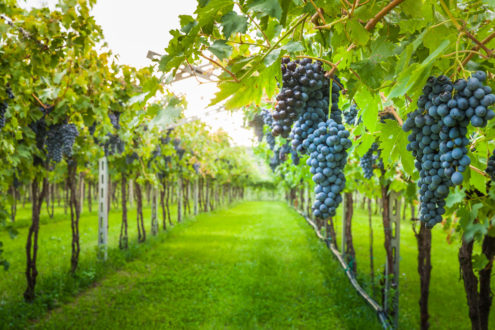Mar 26, 2018Managing Fungicide Resistance with Pristine® Fungicide


{Sponsored} The central valley of California experienced a severe powdery mildew outbreak last year. It was difficult for growers to stay on top of disease pressure, as the environmental conditions were conducive for powdery mildew growth and spread.
Since Pristine® fungicide has been and still is the premier fungicide on the market to help prevent this disease, we talked to Leigh Ann Harrison, technical service representative at BASF, about what that means for California and other locations as far as mitigating this level of disease pressure for the coming seasons. “In 2016, there was also a high level of powdery mildew pressure, so there was a lot of inoculum present in the vineyards, lying dormant in wood, which was released into the air in 2017,” Harrison said.
Pristine fungicide is designed as a premix with dual modes of action. It is a broad spectrum fungicide that controls many fungal diseases. For example, it is effective in preventing powdery mildew and summer bunch rot in grapes, botrytis in strawberries, and brown rot blossom blight in stone fruits. It will even protect against post-harvest brown rot sometimes found in stone fruit.
For grapes, BASF recommends that Pristine fungicide is applied primarily at full bloom. “The rate that is used by the grower will depend on the history of botrytis pressure and if there are weather conditions conducive to botrytis. If there is high pressure and history, we recommend a 23-ounce rate to control powdery mildew and botrytis. But if your area primarily has powdery mildew pressure, we recommend the 12.5-ounce rate,” Harrison said.
We asked Harrison how Pristine is able to control these prevalent diseases. She told us that the Pristine fungicide contains two excellent modes of action, pyraclostrobin and boscalid. They are both respiratory inhibitors, but they target two different sites with the fungal mitochondria. Pristine stops the fungus from making energy (ATP).
Beyond the obvious disease efficacy benefits of using Pristine, it provides several other plant health benefits. It also promotes growth efficiency and reduction in stress to the plant. Stressors include drought, heat and cold. BASF has completed several years of trials that show these benefits as well as an increase in growth efficiency.
Resistance management is always on the minds of growers of all fruits and vegetables. “Fungal resistance to a fungicide can occur when FRAC guidelines are not properly followed when using these tools,” Harrison said. However, Harrison says that failures due to fungicide resistance aren’t that common. Often times, there wasn’t sufficient spray coverage or a spray interval was stretched too long, which may be mistaken for fungicide resistance.
What is the recommendation for preventing resistance to this fungicide?
- Rotate FRAC codes or modes of action.
- Use a product such as Pristine, which is a pre-mix with “built-in” resistance management.
- Rotate fungicides with dusting sulfur applications.
- Ensure good application coverage with adequate fungicide rate.
- Apply preventatively, not after you see the fungus developing.
Always read and follow label directions. Pristine is a registered trademark of BASF.
© 2018 BASF Corporation














